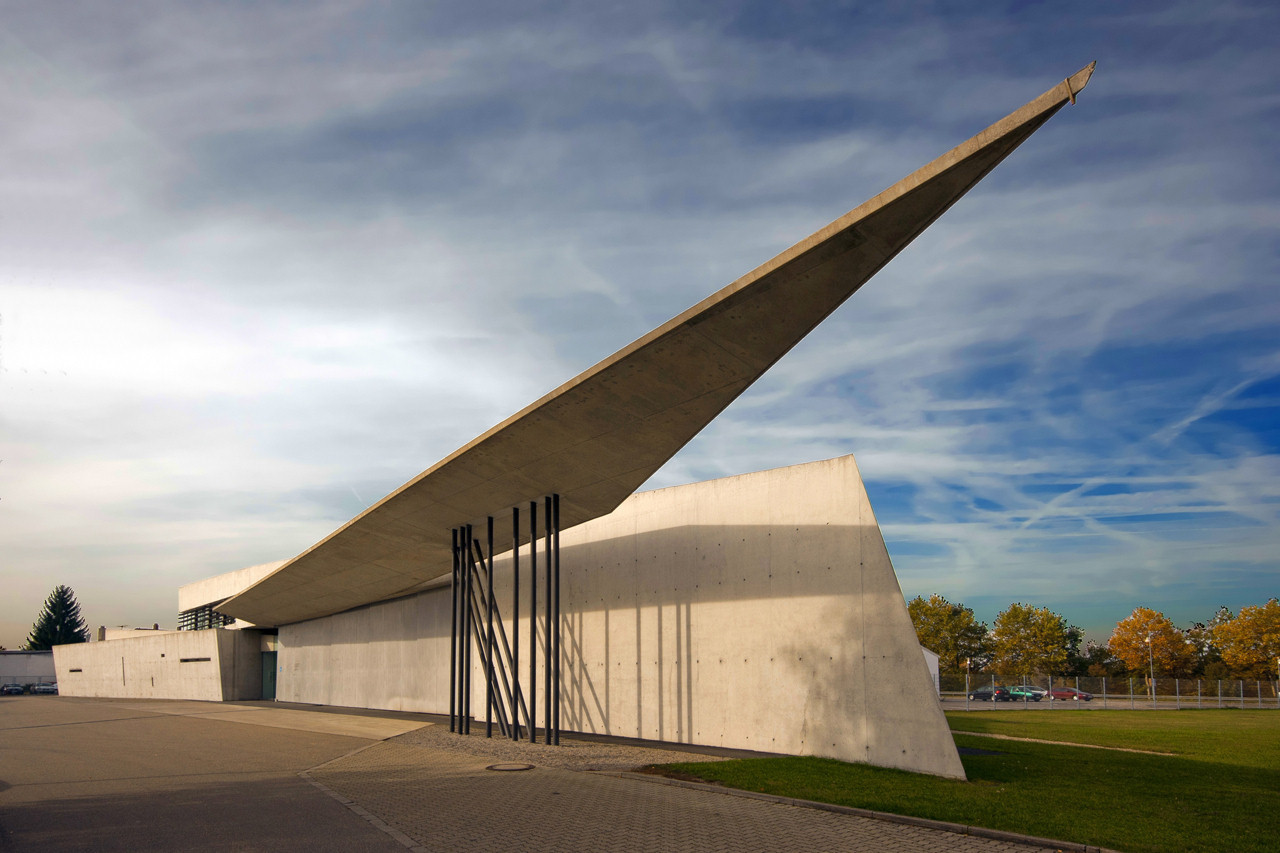Was really floored by the sudden and shocking death in Miami of Zaha Hadid, one of the planet’s handful of brand-name architects, the foremost female in the profession and probably the most famous Iraqi in the world. She was often referred to as a “diva” because of her tempestuousness, the cost overruns and, yes, her gender. But everyone working on that level, every Gehry and Meier, is a diva because they’re artists operating in a highly commercial form and have great responsibility to function. It’s a struggle to protect the vision, the beauty, which can warp and shrink under various pressures. They’re not saints, as nobody working in the hundreds of millions, even billions, can be, but there was something of the angels in many of Hadid’s buildings. She made tiny spots on the globe look different and better. Their impact spread beyond those few acres.
From John Winter’s 1993 AR piece on the unveiling of the Vitra Fire Station, when Hadid made the leap beyond paper architect:
The first building by a serious architect is always a major event, and perhaps it is appropriate that this one is realised in that part of the world where, from Rudolf Steiner to Gunter Behnisch, the rule of the right angle has often been set aside. In this case Hadid’s startling imagery of exploding parallelograms has been faithfully carried through to the finished building. The parallelograms are in control and the functions occur in the spaces between them.
The building appears to work well enough and to be well built but this is not an architecture that is dominated by programme or love of construction. Instead, it owes much to the formal idea. The form is heroic and this is a heroic building, like the pre-war buildings of Le Corbusier or the post-war work of Mies – or, if you prefer, like Stonehenge or Gloucester choir. The architects of all these buildings shared a private skill of knowing precisely what to do and the ability to get it done without compromise.
The fire station was seen as having to turn the route and blot out the surrounding buildings. To achieve the latter, the building was made very long so that it became an enclosing fence; to achieve the former, lines are made in the surrounding landscape and the planes of the building are angled in such a way as to lead you round the corner. These planes are of in situ concrete with the bolt holes exposed in the Kahnian manner. Half a dozen planes form the plan, and their height generates the depth for spanning large openings – 32 m over the garage doors and 29 m in a curved beam above the back window of the ground floor.
Space flows infinitely and there are no enclosed rooms, but freestanding, wavy, stainless steel lockers which partition off the changing areas for male and female firefighters. These areas are punctuated by scattered, Ronchamp-style windows. Roof slabs were poured in boarded formwork with no bolt holes, and the floor slab is split open to admit the staircase, a split emphasized by an adjacent crack which forms an artificial light source and defines the limit of the room above.Slabs thicken to enclose services and lights and to receive an internal lining of insulation and plaster where required. The building is only heated intermittently, so insulation is internal to achieve a fast response. Many spaces are not heated, and these, together with internal walls, are left as exposed concrete. Where there is plaster it is mostly white, with a gold end wall and some walls painted in dark, earthy hues.
After Zaha Hadid left the AA she began tutoring. For a time she collaborated in the OMA office, but has not undergone the usual apprenticeship of young architects who spend years detailing under the supervision of a more experienced architect. So she has never been exposed to conventional ways of doing things, and the fire station is put together like no other building.
If God is in the details then this would seem to be an atheist’s building. Many details are eliminated, there are no skirtings, no door frames, no floor finishes, no light fittings. In line with the main generative concept, doors are simply planes that slide past their surroundings. Lighting takes the form of fluorescent strips in continuous slots embedded in the ceilings or floor, usually placed to throw light on to a wall, transforming it into a glowing plane.•
Tags: John Winter, Zaha Hadid

